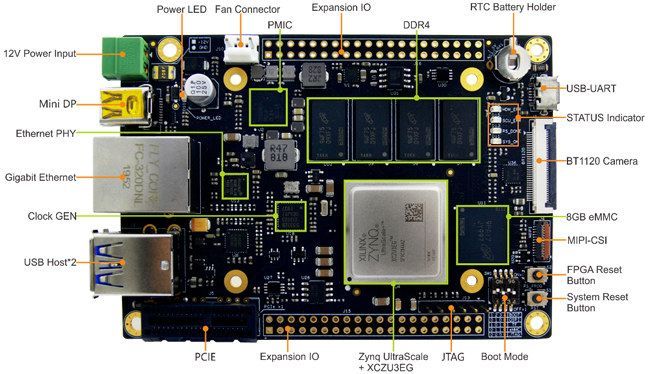Construction is complete on Beijing’s new mega-airport. This is what it looks like.
Get the latest international news and world events from around the world.


Zynq UltraScale+ Arm FPGA FZ3 Deep Learning Accelerator Card Supports Baidu Brain AI Tools
MYIR’s FZ3 card is a deep learning accelerator board powered by Xilinx Zynq UltraScale+ ZU3EG Arm FPGA MPSoC delivering up to 1.2TOPS for artificial intelligence products based on Baidu Brain AI open platform.
The FZ3 card also features 4GB RAM, 8GB eMMC flash, USB 2.0 & USB 3.0 ports, Gigabit Ethernet, DisplayPort (DP) output, PCIe interface, MIPI-CSI and more.
MYIR FZ3 card specifications:
Why the Virus Stimulus Is Renewing the Universal Basic Income Debate | WSJ
Do the stimulus checks being sent to individuals to help in the coronavirus crisis count as a form of universal basic income? Andrew Yang thinks so. But, as WSJ’s Jason Bellini reports, others believe the intention behind UBI is misguided. Photo: Tom Brenner/Getty Images.
More from the Wall Street Journal:
Visit WSJ.com: http://www.wsj.com
Visit the WSJ Video Center: https://wsj.com/video
On Facebook: https://www.facebook.com/pg/wsj/videos/
On Twitter: https://twitter.com/WSJ
On Snapchat: https://on.wsj.com/2ratjSM
#WSJ #UBI #Coronavirus


Tesla chief Elon Musk teams up with Covid-19 player CureVac to build ‘RNA microfactories’
Thank you my hero.
Elon Musk has joined the global tech crusade now underway to revolutionize vaccine manufacturing — now aimed at delivering billions of doses of a new mRNA vaccine to fight Covid-19. And he’s cutting right to the front.
In a late-night tweet Wednesday, the Tesla chief announced:
Tesla, as a side project, is building RNA microfactories for CureVac & possibly others.

Tesla to Build Mobile RNA Microfactories for CureVac’s COVID-19 Vaccine
Vitaliy Karimov/Shutterstock
Tesla, the electric car company founded and run by Elon Musk, is building mobile molecular printers to assist Germany’s CureVac in manufacturing its experimental COVID-19 vaccine. Musk tweeted the information on Wednesday, July 1.
The “printers” are portable, automated messenger RNA (mRNA) production units, which Musk referred to as “RNA microfactories.”

Artist uses AI to create stunning realistic portraits of historical figures
Is this artificial intelligence or a time machine?
Bas Uterwijk, an Amsterdam-based artist, is using AI to create extremely lifelike photographs of historical figures and monuments such as the Statue of Liberty, artist Vincent van Gogh, George Washington and Queen Elizabeth I.
Using a program called Artbreeder, which is described as “deep learning software,” Uterwijk builds his photographs based on a compilation of portraits, reports the Daily Mail. The program pinpoints common facial features and photograph qualities to produce an image.

